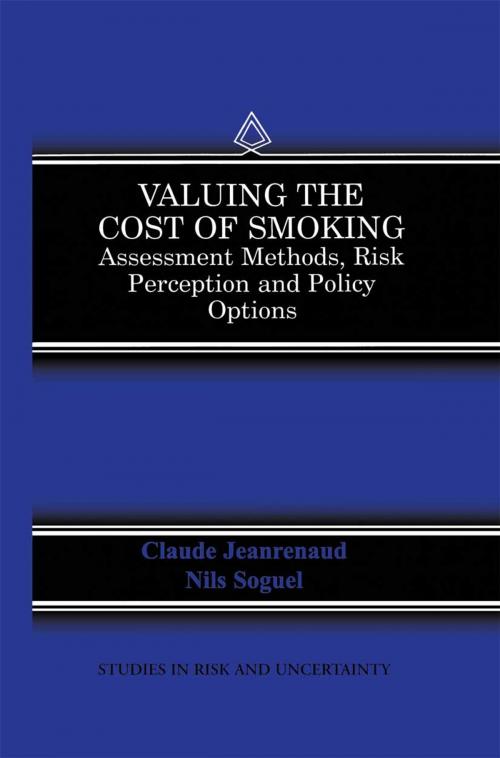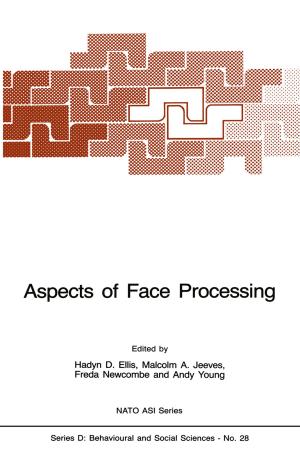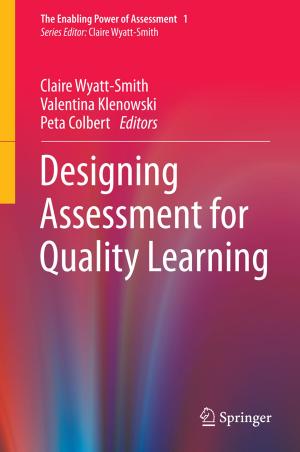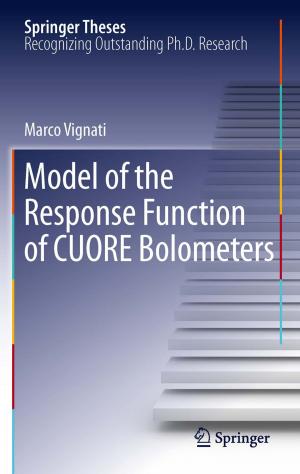Valuing the Cost of Smoking
Assessment Methods, Risk Perception and Policy Options
Business & Finance, Economics, Microeconomics, Nonfiction, Social & Cultural Studies, Political Science, Politics, Economic Policy| Author: | ISBN: | 9789401144155 | |
| Publisher: | Springer Netherlands | Publication: | December 6, 2012 |
| Imprint: | Springer | Language: | English |
| Author: | |
| ISBN: | 9789401144155 |
| Publisher: | Springer Netherlands |
| Publication: | December 6, 2012 |
| Imprint: | Springer |
| Language: | English |
CLAUDEJEANRENAUD NILS SOGUEL Smoking is a very common habit all over the world. The prevalence rate ranges from 20% - 40% in industrialised countries, and is dramatically increasing in the developing world. Smoking is risky and there is ample scientific evidence to support this statement. We know that smoking is a major cause of disease and premature death, in view of the fact that 3 million people die each year worldwide as a result of their smoking habit. Twenty years ago, the U. S. Surgeon General identified smoking as the single most important cause of morbidity and premature death (USDHEW, 1979). Tobacco consnmption reduces life expectancy vastly. Epidemiological research shows that people who have died from a smoking-related disease would, on average, have lived for an additional 15 years had they not been smokers (Warner, 1987). The economic analysis of tobacco consumption is a complex and challenging issue, which entails addressing many different questions. What is the economic burden of smoking and do smokers "pay their way"? How do individuals perceive their own health risks? What is the effect of the addicting properties of nicotine on the behaviour of a rational, utility maximizing individual? Lastly, what is the most effective way to discourage tobacco consumption? In this context, the assessment of the social burden of smoking using a cost-of-illness framework has played a central role since the beginning of the seventies.
CLAUDEJEANRENAUD NILS SOGUEL Smoking is a very common habit all over the world. The prevalence rate ranges from 20% - 40% in industrialised countries, and is dramatically increasing in the developing world. Smoking is risky and there is ample scientific evidence to support this statement. We know that smoking is a major cause of disease and premature death, in view of the fact that 3 million people die each year worldwide as a result of their smoking habit. Twenty years ago, the U. S. Surgeon General identified smoking as the single most important cause of morbidity and premature death (USDHEW, 1979). Tobacco consnmption reduces life expectancy vastly. Epidemiological research shows that people who have died from a smoking-related disease would, on average, have lived for an additional 15 years had they not been smokers (Warner, 1987). The economic analysis of tobacco consumption is a complex and challenging issue, which entails addressing many different questions. What is the economic burden of smoking and do smokers "pay their way"? How do individuals perceive their own health risks? What is the effect of the addicting properties of nicotine on the behaviour of a rational, utility maximizing individual? Lastly, what is the most effective way to discourage tobacco consumption? In this context, the assessment of the social burden of smoking using a cost-of-illness framework has played a central role since the beginning of the seventies.















